The Smart Protein project aims to explore the crop suitability and processing quality of quinoa, faba beans, lentils, and chickpeas in seven representative pedo-climatic zones of Europe, using organic regenerative farming systems. Learn more about the progress of this project, which is helping Europe transition towards more sustainable plant-protein production.
The way we produce and consume protein today presents significant social, environmental, and economic challenges. In particular, relying on animal-based protein sources puts a heavy strain on our environment.
In order to meet the increased demand for protein sources and the need for more resource-efficient production, the first Work Package from the Smart Protein project is focusing on protein-crop production in Europe, using regenerative organic farming systems. The University of Udine is leading this Work Package in collaboration with eight additional partners across Europe: Glanbia and Beotanics in Ireland, Intia in Spain, Delphy in the Netherlands, the University of Copenhagen in Denmark, Arca and Quinoa Marche in Italy, and Equinom in Israel.
The project will demonstrate the crop suitability and processing quality of quinoa, faba beans, lentils, and chickpeas, in Denmark, Ireland, Italy, the Netherlands, Poland, Portugal, and Spain, using the aforementioned organic regenerative farming systems.
Legume consumption has dipped in the last few decades
Achieving sustainability is at the heart of agricultural policy debates in Europe. While crop diversification is important to sustainable agriculture, over the last 60 years, Europe has moved in the opposite direction, favouring just a few cereals (maize, wheat, and barley) and oilseeds (canola and sunflower). A significant reduction in the area cropped with grain legumes (pulses for food, in particular) has been observed, leading to a reduction of the ecosystem services provided by legumes.
“The acreage of protein crops such as peas and faba beans was considerable in the early nineties of the last century, and collapsed again as prices went down or subsidies were banned,” says Harm Brinks, Project Manager at Delphy, one of the Smart Protein project partners. Farmers crop cereals because the industry prefers cheap grain legumes (for feed or for food) from elsewhere, says Harm.
The simplification and specialisation of agricultural production systems over time has led to a general decrease in diversity. As a result, agricultural landscapes are becoming more homogenous, and wheat and other cereals reign supreme in Europe. “It seems that farmers are locked into the current food-supply chain, since most research, genetic improvements, and farmer consultancy system is based on major cereal or bio-energy crops,” says Gemini Delle Vedove, Senior Researcher in Agronomy and a Lecturer in Organic Farming at the University of Udine, as well as the leader of Smart Protein’s Work Package 1. Farmers’ lock-in is also caused by high specialisation downstream of the supply chain: cereal selection and storage plants are generally not able to manage grain legumes or other crops for human consumption (e.g. buckwheat, millet, quinoa, amaranth). The majority of storage and processing facilities are designed for cereals or oilseed crops for biofuel (e.g. rapeseed or sunflower).
Crop diversification and regenerative organic agriculture for sustainable agriculture
The Smart Protein project has made the growing of protein crops (chickpeas, fava beans, lentils, and quinoa) using regenerative organic agriculture (ROA) principles a key focus of its work. ROA moves beyond sustainable agriculture and is based on the principles of regenerating soil health in order to more fully sustain life and local ecosystems. The four keystones of regenerative agriculture, as applied to croplands, are:
- Minimise soil disturbance
- Maximise soil cover
- Maximise living roots
- Maximise crop diversity
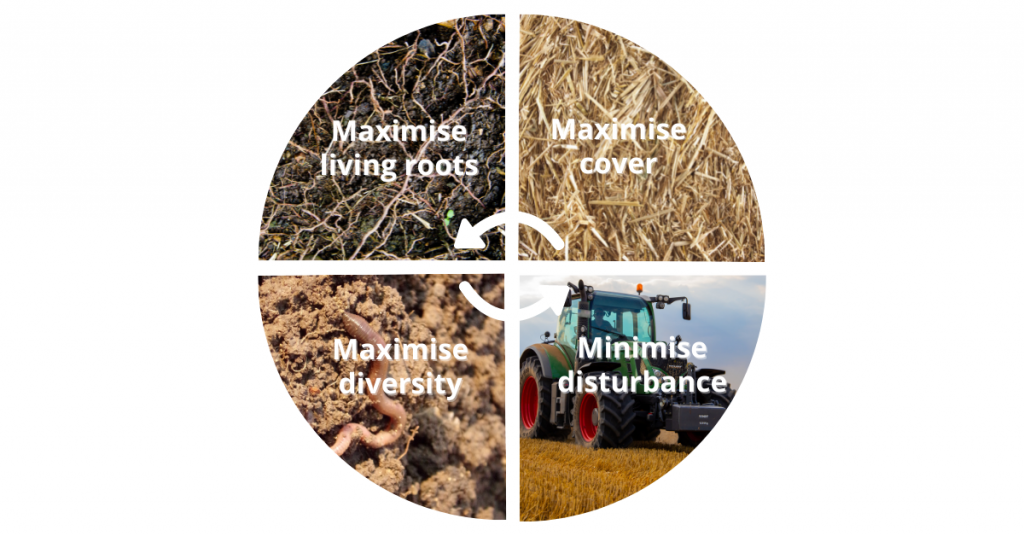
Minimising soil disturbance and maximising soil cover protect the soil habitat (soil houses vital living organisms), resulting in a positive balance of organic matter in the soil, while maximising living roots and crop diversity helps to feed the organisms inhabiting the soil and allows for important soil services (nutrient cycling, carbon sequestration, reduction of pests and diseases). Key to this approach is the acknowledgement that the role of soil extends beyond food provisioning and is vital for planetary health.
Results from the field
The first year of Work Package 1 was dedicated to trials of various varieties of chickpea, fava bean, lentil, and quinoa. Commercial and pre-commercial varieties were tested in experimental plots in Denmark, Netherland, Ireland, Spain, and Italy.
Unfortunately, the COVID-19 pandemic delayed the sowing time in Southern Europe by 45-90 days, compared to the optimal sowing dates, while, in Northern Europe, sowing dates were delayed by 15 days. The delay is considered detrimental in the Southern European regions due to the increased risk of high temperatures and drought conditions during the flowering and seed-filling periods. And, in fact, high temperatures during flowering were indeed prejudicial for lentils’ seed setting in Spain. But some accidents also occurred in Northern Europe: in Ireland, two storms close to harvest compromised the ripening of the fava beans, chickpeas, and lentils. As a result, Southern Europe only obtained yield results in Spain and only for chickpea and quinoa. More data was collected in Northern Europe, although not at an optimal level.
Table 1 Length of growing season, in days
| Chickpeas | Fava beans | Lentils | Quinoa | |
| Denmark and Netherlands | 142 days | 121 ±1 days | 115 ±5 days | 144 ±22 days |
| Ireland | – | – | – | 158 ±4 days |
| Spain | 126 days | 135 days |
Key findings for chickpeas
- The most productive environment for chickpeas was Spain, where local varieties were planted. The average of 2.31 tons per hectare is satisfactory from a farmer perspective, even though it required six rounds of hoeing to control weeds and three rounds of spraying for the biological control of Heliotis and Autographa (Lepidoptera). Unfortunately, the Ascochyta blight (Ascochyta rabiei) was only detected before harvesting.
- In Denmark and Ireland, Chickpea production either failed completely or produced small yields. However, no diseases were observed and there was less weed pressure compared to the experimental sites in Southern Europe (Figure 1). In 2021, a new trial was run to determine whether chickpeas are a feasible crop in these Northern European sites.
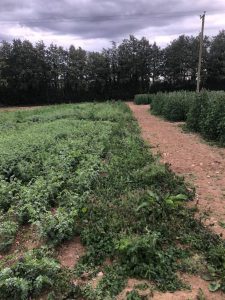
Figure 1 Competition between chickpea and weeds in Ireland in July 2020 (Credits Dragica Grosdanic. BEOTANICS – IE)
Keys findings for fava bean
- The mean yield for fava beans was low in the Netherlands (only 1.41 ton per hectare at 10% seed moisture) and very poor in Denmark (0.29 t/ha). These results are quite far from the best yield attainable by these crops in Northern Europe (above 3 t/ha). The 15-day delay in sowing due to the COVID-19 pandemic, as well as 2020’s climatic conditions, had a strong impact on the yield.
- The blight Ascochita fabae was present, especially in Denmark and the Netherlands (differences in the susceptibility among varieties were recorded). In the Netherlands, the poor yield was attributed to this disease. This means that for stable yield levels in organic production, resistant varieties are necessary. Ascochita fabae is promoted by wet conditions such as those that were present in 2020 in Northern Europe.
- In Ireland, aphids were present and treated twice with biocontrol agents (i.e. fungus Beauveria bassiana).
- In the Northern European regions, weed pressure was controlled with two or three mechanical or hand weeding sessions. Weeds seem to be best controlled by plant density, plant arrangement, and early canopy development. However, there are significant differences among the Faba bean’s genotypes in terms of using these approaches.
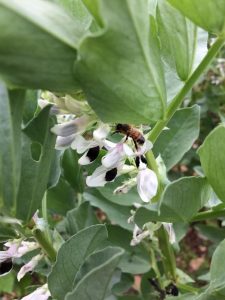
Figure 2 Faba bean at flowering attracts pollinators (Apis mellifera) (Credits Gemini Delle Vedove – UNIUD)
Key findings for Lentil
- Lentils grew well in Spain until mid June 2020, when a sudden increase in air temperature (maximum air temperature above 32°C for several days), combined with drought conditions, led to their drydown after flowering, even with irrigation. A different sowing date (in winter, for example) could prevent the thermal and water stresses of the Mediterranean climate.
- In Northern Europe, the climatic conditions were more suitable and no specific problems with insects or diseases were recorded.
- With an earlier sowing date, in combination with tactics to prevent weed competition (e.g. reducing inter-row distance from 50 to 25 cm and increasing plant density from 100 to 200 plants/m2), this crop should yield the expected quantities of 1.5 to 2 t/ha.
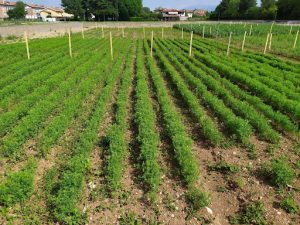
Figure 3 Lentils during the flowering stage (3 June 2020)
Key findings for Quinoa
- This species was sown in late April/early May 2020 in Northern Europe, and at the end of May in Spain. The targeted plant density was 100 plants/m2, with an inter-row distance of around 50 cm. The crop was fertilised organically with 80 kg of nitrogen per hectare.
- Infestations of aphids (green and black) were difficult to control in Ireland with the permitted insecticides. In Spain, two biocontrol treatments in mid-July failed to prevent an extensive invasion of Lygus lineolaris on quinoa panicles. This pest probably affected the final yield in Spain (average of 0.68 t/ha at 10% moisture content).
- Two or three rounds of weed control were required before flowering.
- Irrigation could be needed after sowing or in July and August (e.g. in Spain).
- In Northern European, the crop is optimally sown at the end of April, while in Southern Europe, an earlier sowing date (in February) is needed to escape water and biotic stresses.
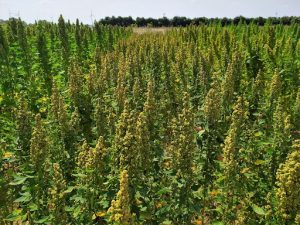
Figure 4 Quinoa at seed filling stage (Lelystad, end of July 2020) – Credits Harm Brinks DELPHY
References
Zander, P., Amjath-Babu, T.S., Preissel, S. et al. Grain legume decline and potential recovery in European agriculture: a review. Agron. Sustain. Dev. 36, 26 (2016). https://doi.org/10.1007/s13593-016-0365-y
Ditzler, L., Apeldoorn, D. F. Van, Pellegrini, F., Antichi, D., Bàrberi, P., & Rossing, W. A. H. (2021). Current research on the ecosystem service potential of legume inclusive cropping systems in Europe . A review. 41(26), 13. https://doi.org/10.1007/s13593-021-00678
Magrini, M. B., Anton, M., Chardigny, J. M., Duc, G., Duru, M., Jeuffroy, M. H., Meynard, J. M., Micard, V., & Walrand, S. (2018). Pulses for Sustainability: Breaking Agriculture and Food Sectors Out of Lock-In. Frontiers in Sustainable Food Systems, 2(October), 1–17. https://doi.org/10.3389/fsufs.2018.00064
Magrini, M. B., Anton, M., Cholez, C., Corre-Hellou, G., Duc, G., Jeuffroy, M. H., Meynard, J. M., Pelzer, E., Voisin, A. S., & Walrand, S. (2016). Why are grain-legumes rarely present in cropping systems despite their environmental and nutritional benefits? Analyzing lock-in in the French agrifood system. Ecological Economics, 126, 152–162. https://doi.org/10.1016/j.ecolecon.2016.03.024
Pelzer, E., Modotti, M., Ballot, R., & Jeuffroy, M.-H. (2019). Motivations and observed benefits and limits from farmers growing legumes. European Conference on Crop Diversification 2019 . Session 15.
Reckling, M., Bergkvist, G., Watson, C. A., Stoddard, F. L., & Bachinger, J. (2020). Re-designing organic grain legume cropping systems using systems agronomy. European Journal of Agronomy, 112(December 2018), 125951. https://doi.org/10.1016/j.eja.2019.125951
Watson, C. A., Reckling, M., Preissel, S., Bachinger, J., Bergkvist, G., Kuhlman, T., Lindström, K., Nemecek, T., Topp, C. F. E., Vanhatalo, A., Zander, P., Murphy-Bokern, D., & Stoddard, F. L. (2017). Grain Legume Production and Use in European Agricultural Systems. In Advances in Agronomy (Vol. 144, pp. 235–303). https://doi.org/10.1016/bs.agron.2017.03.003
Zander, P., Amjath-Babu, T.S., Preissel, S. et al. Grain legume decline and potential recovery in European agriculture: a review. Agron. Sustain. Dev. 36, 26 (2016). https://doi.org/10.1007/s13593-016-0365-y
